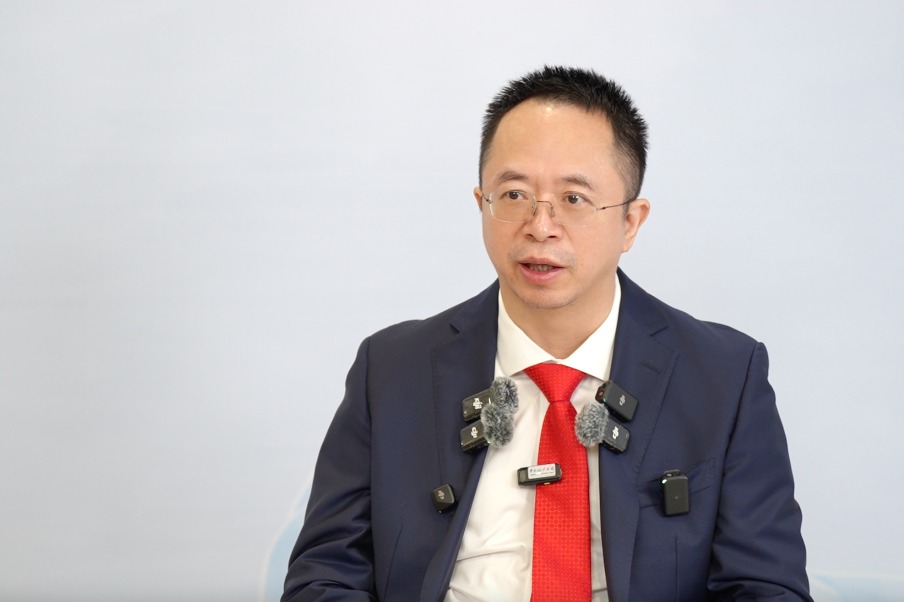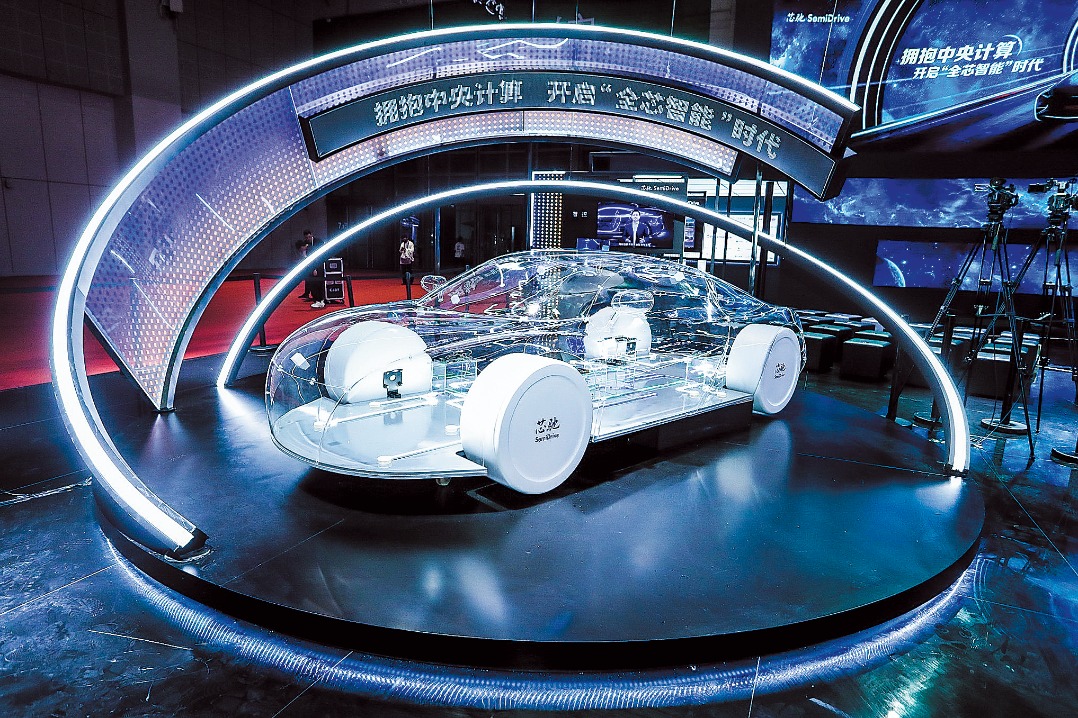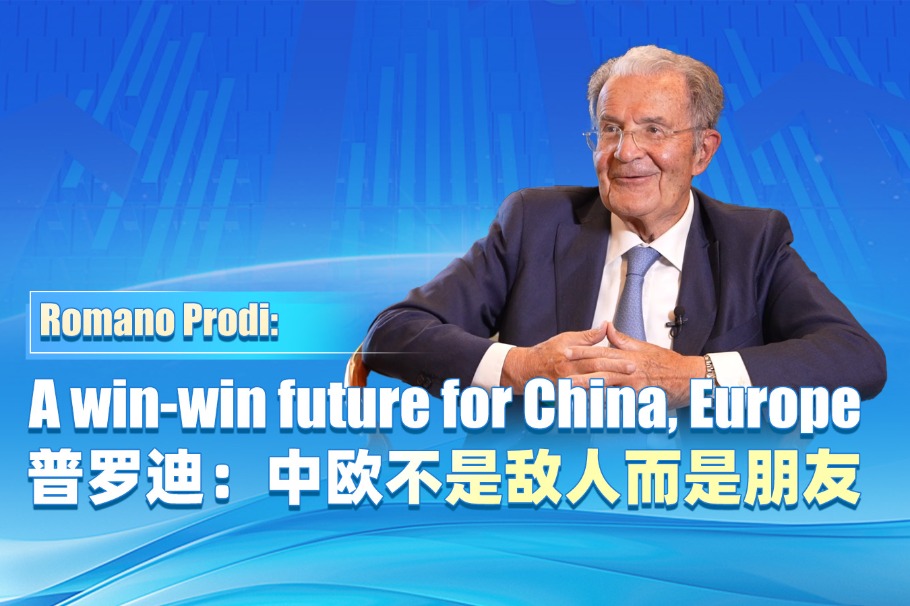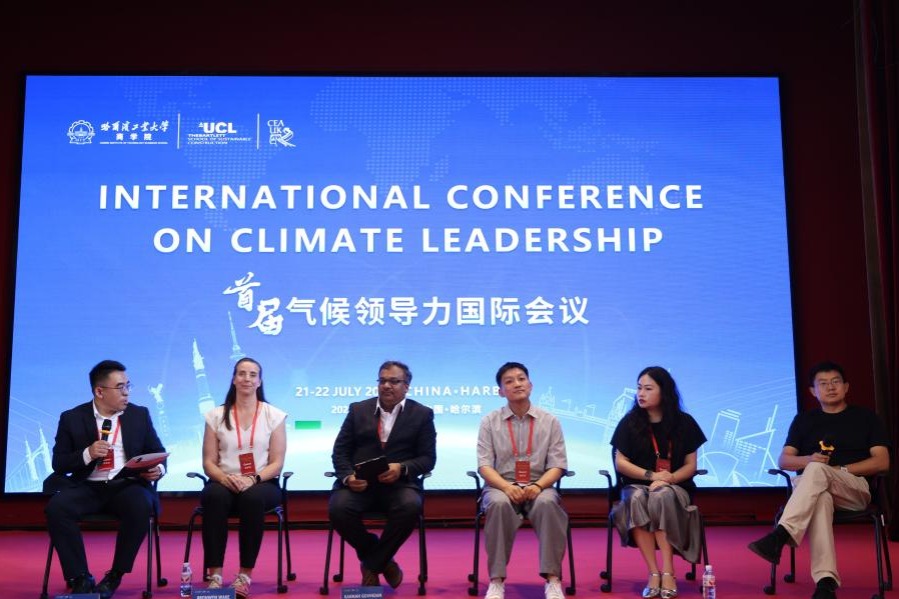Chinese artist redefines porcelain art to go global
Master of the craft Lai Dequan bridges Eastern tradition with Western aesthetics

In 1993, when Lai Dequan went to Japan to exchange ideas with local artists, he left them astonished.
Lai is a master of porcelain art. Every step of making porcelain is second nature to him, from shaping and glazing to finishing paintings on porcelain or ceramic plates.
"We were at the home of a Japanese potter. Japanese potters at that time thought Chinese ceramic artists were like 'porcelain fossils', only capable of painting and decorating ceramics," Lai said.
Lai indeed painted for them, but when they later challenged his knowledge of the subsequent steps for making porcelain, he proved them wrong. For Lai, who had worked as a technical director in a ceramics factory, the answers were elementary.
"I told them the right temperature to fire the glazed colors and the specific steps to follow. They were amazed, saying I was a very different kind of artist," Lai said.
Taking his art pieces out of China and exchanging ideas with international peers is common for Lai. He has visited Japan nine times and participated in three Asia-wide ceramic art festivals.
He has exhibited his works in over 10 countries and regions, including Japan, the United States, Canada, Singapore, South Korea, Australia and Indonesia.
"Part of art is about communication," Lai said. "In March, two mayors from Italy came to Jingdezhen for a visit. They were excited when they visited my art gallery, saying the colors in my paintings resembled those of Vincent Van Gogh and Oscar-Claude Monet. They were surprised by the richness of ceramic art."
Lai is a Chinese master of arts and crafts with an extended family heritage in porcelain and ceramic art.
The 69-year-old was born and lives in Jingdezhen, a city in East China's Jiangxi province. It is often called the porcelain capital for its essential role in the domestic and international ceramic industry.
Lai's grandfather was a famous ceramic artist in Jingdezhen during the Republic of China era (1911-49).
Although immersed in traditional Chinese ceramic art from a young age, Lai never confined himself to it. He has always been interested in Western and contemporary art.
"I often look at Western oil paintings, like Monet's and Van Gogh's. I think their use of color is excellent. Monet's sense of light and color is very delicate. So, I use ceramics to create colors and light that oil paintings cannot bring," Lai said.
In 2005, his porcelain plate paintings caught the attention of a British museum curator at an auction in Hong Kong's Pacific Place.
"The collector saw one of my porcelain plate paintings and was amazed. He said it looked like a Chinese oil painting but didn't feel like an oil painting. Later, when he found out it was done on a ceramic plate, he was wowed," Lai said.
The British collector told Lai that he had never bought ceramics but bought one of Lai's porcelain plate paintings for 800,000 yuan ($110,480).
Lai believes that the benefit of Jingdezhen's ceramic artists going global is bridging the communication between Eastern and Western art.
"It's just like what I did in the late last century. If I didn't go out of my country and meet my artist peers in Japan, South Korea, or any other place, they wouldn't know how China's artists are doing and what China's porcelain art looks like," said Lai.
Lai combines traditional Chinese art with Western style, adopting techniques such as finger painting. Pearlcolored porcelain is a unique style he developed.
"Art should retain its national character while appropriately incorporating some Western colors and styles to integrate the East and the West," Lai said. "By doing it this way, Chinese artists' artworks can go beyond borders, and people in other countries can appreciate and collect Chinese art."
Lai said the move would expand the exchange of art creation while promoting the export sales of Chinese ceramics.
Jingdezhen, where Lai resides, is accelerating China's ceramics and its creators' path to the global stage.
In 2012, Jingdezhen transformed a former state-owned porcelain factory into Taoxichuan park, a ceramic-themed business, tourism and cultural district. In recent years, it has attracted more than 1,000 international artists for residencies and exchanges, hosting hundreds of international art exhibitions.
At the same time, Jingdezhen has established friendly city relationships using ceramics as a medium and set up cooperative ties with 21 ceramic-producing cities in countries involved in the Belt and Road Initiative.
Jingdezhen has also hosted international cultural exchange activities, with more than 100 foreign diplomats and experts from more than 100 countries visiting the city.
However, Lai believes that current international exchanges are still insufficient and calls on the government to do more. "Exchange is not an individual issue. International exchange requires channels," said Lai.
"This requires governments and institutions to figure out a way. The government and non-governmental organizations should work together to set up exchange institutions and mechanisms so that young people can go out more frequently," Lai said.
Ran Xiangfei was a young artist who went abroad in 2016. For the millennial, going global means being modest and embracing change.
In 2016, he spent three months as an artist in Delft, the Netherlands, before returning to Jingdezhen to continue his creative work and operate his ceramic product brand.
"For Chinese ceramic artists and brands to enter Western homes, they need to understand Western aesthetics and habits. Artists cannot just stay at the bottom of a well," Ran said.
"If artists cling to past glories and refuse to accept new things, it's difficult to continue the inheritance, let alone go global," said Ran.
Zhang Jingjing, dean of the International School of Jingdezhen Ceramic University, agreed.
"Traditional ceramic craftsmanship has a rich history and cultural heritage, but inheritors should not just be immersed in tradition. Instead, they should find their innovative path. This is the foundation for the survival and development of ceramic art creation," Zhang said.
Lai, the master for whom Jingdezhen built an individual art museum, said that modern people's aesthetic consciousness and living environment have changed.
"In addition to artistic creation concepts, in the future, we can introduce high-tech techniques and materials from Western countries, as well as new equipment for producing ceramic products," Lai said.
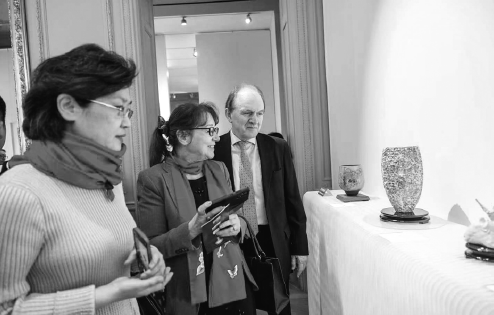
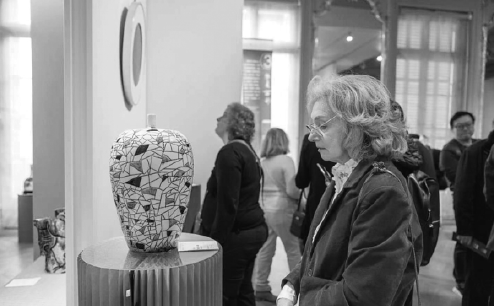
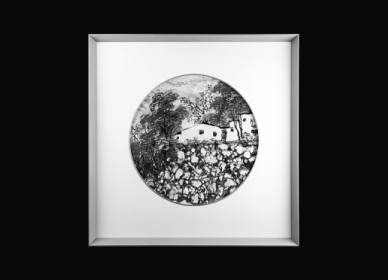

Today's Top News
- Xi extends condolences to Putin over plane crash
- Loan data points to stabilizing realty sector
- China eyes enhancing digital partnership
- Navigating challenges in Sino-US trade ties: China Daily editorial
- China and EU should strive for dynamic equilibrium through shared development
- Xi extends condolences to Putin over plane crash in Russia
















